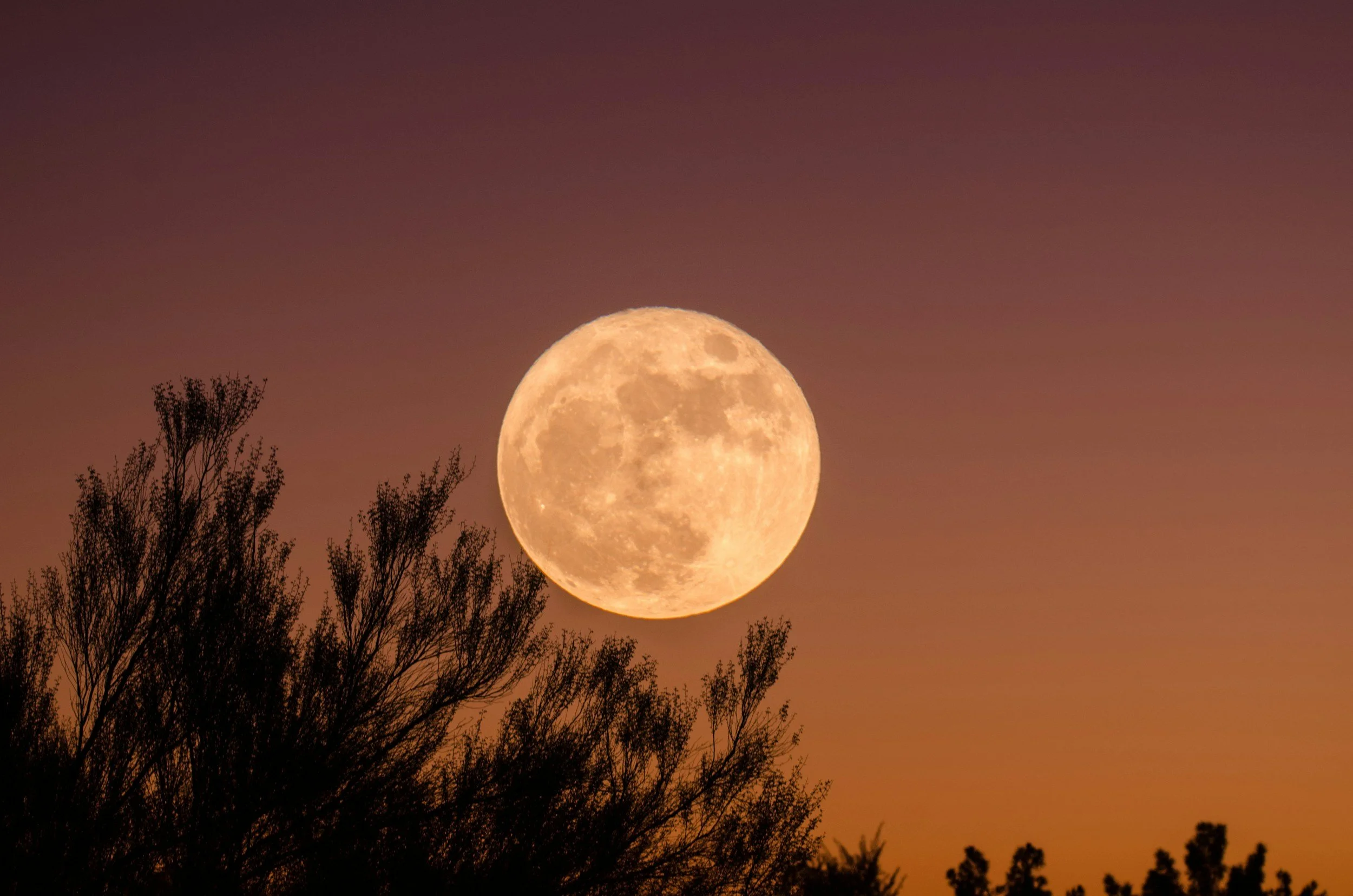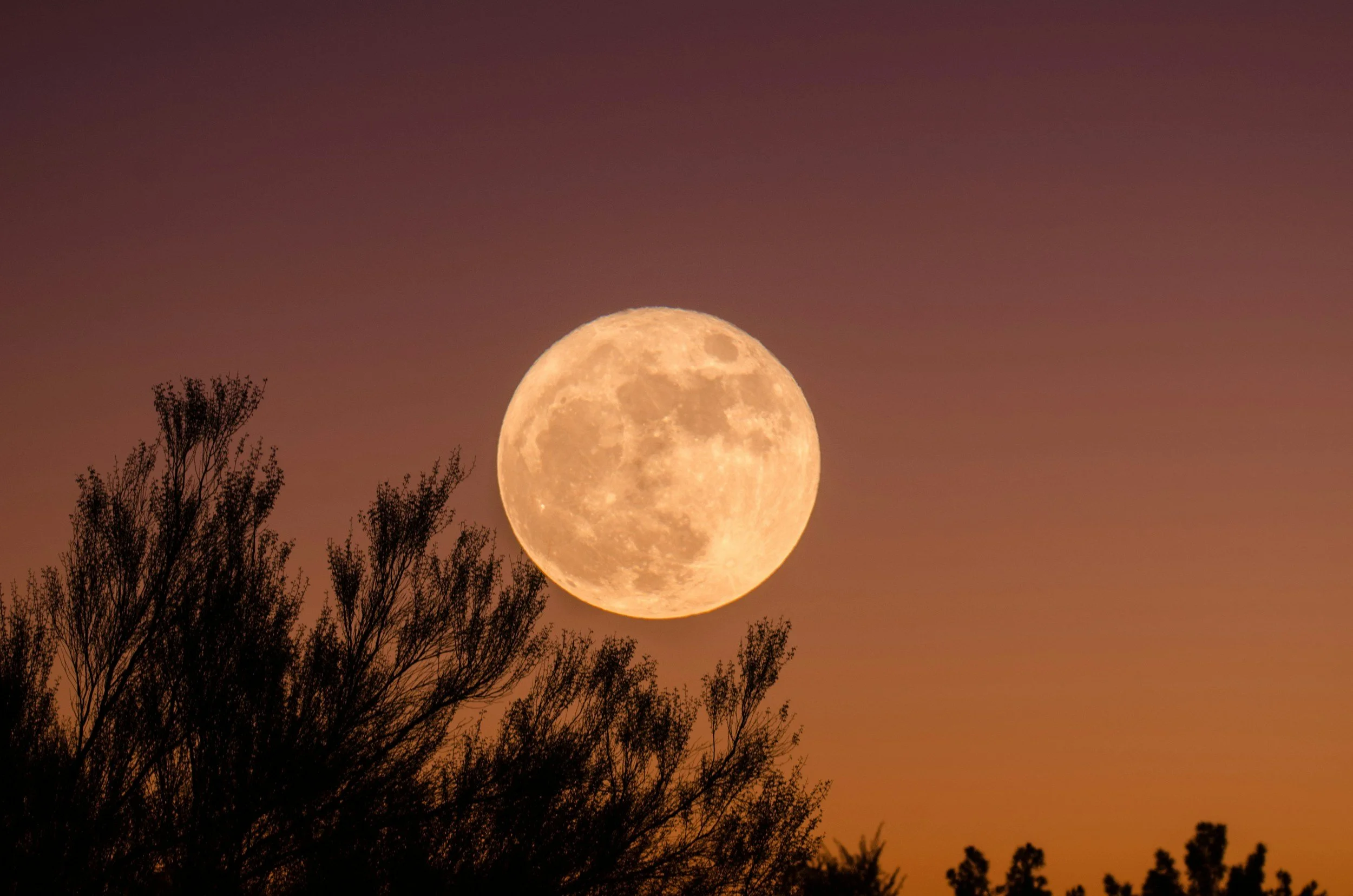Where to See the Full Moon: A Milwaukee Area Viewing Guide
Milwaukee gets a show on Wednesday, Nov. 5: the year’s biggest, brightest full moon—the Beaver supermoon—rises over the lake right around dinnertime. The moon is “full” at 7:19 a.m. CT, and it pops back above the eastern horizon at about 4:24–4:25 p.m., just minutes before our 4:38 p.m. sunset—perfect timing for that dramatic, low-on-the-horizon glow.
Why it looks extra bright: this full moon coincides with perigee (the moon’s closest swing by Earth), making it appear up to ~14% larger and ~30% brighter than a typical full moon. Your eyes may also amplify the effect: near the horizon, foreground cues trick our brains into the classic “moon illusion,” so it looks even bigger than it really is.
Quick plan: find an east-facing view (lakefront, parks, rooftops), be there by 4:15 p.m., and watch the supermoon lift into twilight. If clouds win on the 5th, don’t worry—the moon will still look nearly full the evenings before and after.
Related: Where to view the northern lights in the Milwaukee area.
What’s in a name: Why it’s called Beaver Moon
Folklore gets delightfully practical here. The “Beaver Moon” name comes from seasonal rhythms long before streetlights and streaming queues were a thing. In many Indigenous traditions and later colonial almanacs, November marked the time when beavers were most active—thickening their coats and finishing lodges before winter. It was also the period when trapping season began to secure warm pelts for the cold months ahead.
Names like this weren’t poetic branding exercises; they were calendars encoded in nature. The moon’s cycles cued hunting, harvesting, storing food, and preparation for the long freeze. When you look up at that bright disk in November, you’re seeing a time signal that once said: winter’s coming; time to get industrious. A lunar to-do list, written in sky-ink.
If you enjoy this kind of lunar lore, it’s fun to trace how each full moon name maps onto survival rhythms: sap rising, fish running, corn ripening. It turns the night sky into a seasonal library.
Premier viewing locations
Buckley Park
Klode Park in Whitefish Bay stands out as the top recommendation, offering 17 acres of elevated bluff with commanding eastern views over Lake Michigan. Located at 5960 N Lake Dr, this community gem features paved switchback paths to a sandy beach, making it accessible for all ability levels. The park includes free parking, restrooms, and picnic facilities, staying open until 9:00 PM.
Atwater Park, Shorewood: The 10 PM closing time provides the most flexibility for extended viewing. The elevated bluff position captures moonrise over Lake Michigan with unobstructed eastern horizons. Multiple viewing levels (bluff and beach) offer options, though November temperatures may make beach access less appealing. The 4:45 PM moonrise aligns perfectly with accessibility—full darkness hasn't set in yet, making navigation easier for families.
Buckley Park, Whitefish Bay: Located at 1800 E Henry Clay Street, this smaller neighborhood park offers a more intimate lakefront experience with the same 9 PM closing as Klode Park. The park features direct Lake Michigan beach access with a combination of sand and pebble shoreline. While less developed than larger parks, this creates a quieter, more natural setting for moon viewing. The eastern-facing beach provides unobstructed moonrise views over the water, and the smaller scale means you're more likely to find a peaceful spot away from crowds. The park includes basic amenities with parking and beach access stairs. Best suited for those who prefer a low-key, neighborhood park atmosphere over the more popular destinations, though still offering the essential element: clear views of the moon rising over Lake Michigan.
Doctor's Park in Fox Point provides the most secluded experience, with 49 acres of wooded bluff overlooking Lake Michigan. The Milwaukee County park at 1870 E Fox Lane offers multiple trail options leading to a secluded beach with historic WPA-built stone features. With the latest hours (6:00 AM to 10:00 PM), it offers the best chance for extended viewing sessions.
Mequon Nature Preserve's 40-foot observation tower provides panoramic views from the highest point on the 510-acre preserve. Located at 8200 W County Line Rd, the tower offers bird's-eye visibility extending to downtown Milwaukee on clear days. The preserve maintains sunrise-to-sunset hours with free admission and parking.
Virmond Park in Mequon features dramatic 90-110 foot clay bluffs providing breathtaking Lake Michigan panoramas. Recent improvements include a new floating stairway system for safe beach access. The Ozaukee County park at 10606 N Lake Shore Dr offers excellent facilities including restrooms, playground, and tennis courts.
Timing your visit
Early evening viewing (7:00-9:00 PM) captures the dramatic moonrise through the moon illusion effect, when the moon appears largest against the horizon. This timeframe works perfectly with park hours, as most locations close by 9:00 PM.
The golden hour for photography occurs during the first hour after moonrise, when the moon's warm tones contrast beautifully with twilight skies. Lake Michigan provides stunning reflection opportunities during calm conditions, doubling the visual impact.
For serious astronomers and photographers willing to venture beyond park boundaries, the midnight to 3:00 AM window offers peak viewing conditions when the moon reaches maximum altitude. Consider public road overlooks or 24-hour accessible areas for extended sessions.
Gear for Wisconsin lakefront conditions
Layered clothing systems prove crucial for extended lakefront viewing. Pack a warm jacket or fleece as primary insulation, plus a waterproof outer shell for lake moisture protection. Don't forget warm hats and gloves – temperatures can drop significantly during multi-hour viewing sessions.
Red-filtered flashlights preserve night vision while navigating park trails and setting up equipment. Regular flashlights covered with red cellophane work as budget alternatives. Avoid white lights that destroy carefully developed night vision.
For photography, telephoto lenses of 200mm minimum capture meaningful moon details, though 400-600mm lenses provide professional results. Sturdy tripods remain absolutely essential – lake winds and long exposures demand rock-solid stability. Remote shutter releases eliminate camera shake during critical moments.
Comfort items transform viewing sessions from endurance tests to enjoyable experiences. Pack folding chairs with back support, multiple blankets for warmth and ground covering, plus thermoses filled with hot beverages. Hot chocolate or coffee becomes especially welcome during cool lakefront evenings.
Photography techniques for spectacular results
Camera settings for moon photography follow the "Looney 11" rule: set aperture to f/11, then match ISO and shutter speed (ISO 100 = 1/100s). For sharper results, use f/4 to f/8 apertures with shutter speeds of 1/180s to 1/320s to freeze lunar motion.
Smartphone users achieve better results by disabling flash, using maximum optical zoom (avoiding digital zoom), and enabling manual modes when available. Stabilize phones against solid surfaces or tripods, using headphone volume buttons as remote shutters to minimize shake.
Composition strategies for lakefront locations include using foreground elements like shoreline features, piers, or lighthouse silhouettes. Position yourself east of the lake to capture moonrise over water, creating dramatic reflection opportunities during calm conditions.
Focus techniques require manual focus set to infinity for sharp lunar details. Spot metering on the moon itself prevents overexposure, while shooting in RAW format provides maximum editing flexibility for post-processing.
Accessibility and practical considerations
Klode Park offers the best accessibility features with paved switchback paths, ADA-compliant facilities, and wheelchair-friendly access to overlooks. The warming house provides heated restrooms and shelter during cool evenings.
Doctor's Park provides multiple trail difficulty levels, from paved paths to unpaved woodland routes. The half-mile walk to secluded beach areas may challenge mobility-limited visitors, though bluff-top viewing remains accessible.
All recommended locations offer free parking, though spaces fill quickly during weekend peak viewing times. Arrive early for popular locations like Atwater Park, which relies on street parking along Lake Drive.
Public transportation serves only Atwater Park and nearby Shorewood locations. Personal vehicles remain necessary for all north shore parks, with no reliable bus service to Whitefish Bay, Fox Point, or Mequon areas.
Park hours and regulations to know
Most parks close between 9:00-10:00 PM, significantly limiting late-night viewing opportunities. Klode Park (sunrise to 9:00 PM) and Doctor's Park (6:00 AM to 10:00 PM) offer the best evening access among premier locations.
Schlitz Audubon Nature Center provides excellent 60-foot observation tower views but closes at 8:00 PM during summer, 4:30 PM off-season, making it unsuitable for moonrise viewing. The center requires admission fees ($8 adults, $5 ages 3-17).
Overnight parking prohibitions affect most communities, with no parking between 9:00 PM and 6:00 AM in public areas. Whitefish Bay residents can obtain special overnight permits for up to 25 nights annually.
Beach access regulations vary by location. Some parks like Doctor's Park prohibit dogs on beaches, while others maintain swimming-at-own-risk policies with no lifeguard services.
Backup plans for cloudy skies
Milwaukee Public Museum's Daniel M. Soref Dome Theater houses Wisconsin's largest and most modern planetarium with Digistar 6 projection systems. 45-minute virtual tours ($10) include "Wisconsin Stargazing" presentations featuring current night sky conditions.
UW-Milwaukee's Manfred Olson Planetarium offers free stargazing sessions on the Physics building's 5th-floor rooftop, weather permitting. The facility features a 14-inch Celestron telescope and requires $25 annual membership for regular access.
Milwaukee Astronomical Society Observatory in New Berlin hosts free public observing nights April through October. Located at 18850 W Observatory Road, the facility features multiple observatory domes and experienced volunteer astronomers.
For high-rise viewing alternatives, consider eastern-facing windows in downtown Milwaukee buildings or UW-Milwaukee campus elevated locations. Bradford Beach covered pavilions provide limited weather protection while maintaining lake views.
Conclusion
Success depends on early arrival at popular locations, appropriate cold-weather gear, and flexible backup plans for changing weather conditions. The combination of elevated bluff parks, excellent eastern horizon views, and September's comfortable weather creates ideal conditions for both casual viewing and serious photography.
While park hour limitations prevent late-night viewing at premier locations, the early evening moonrise spectacle over Lake Michigan offers rewards that justify the timing constraints. Milwaukee's north shore provides some of the Midwest's finest moon viewing opportunities, making September 7 an event worth experiencing from these exceptional lakefront vantage points.





Milwaukee sits at the southern edge of aurora country, but northern lights are absolutely visible from the greater Milwaukee area during periods of enhanced solar activity.